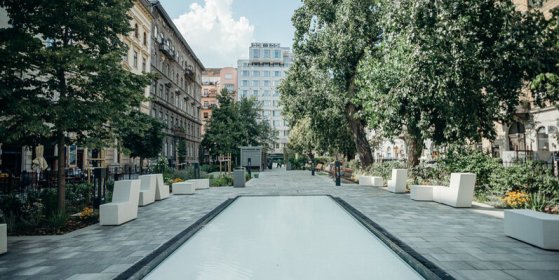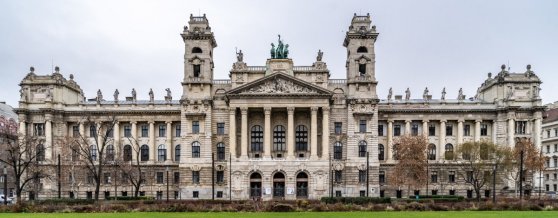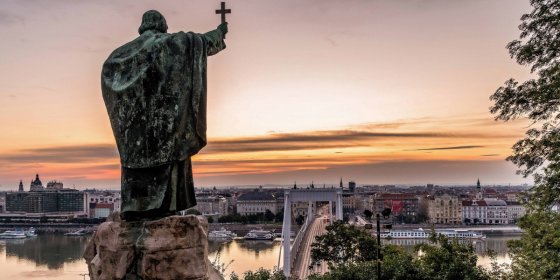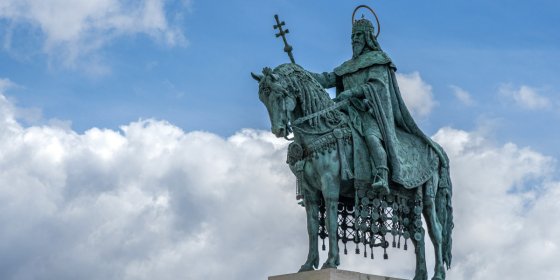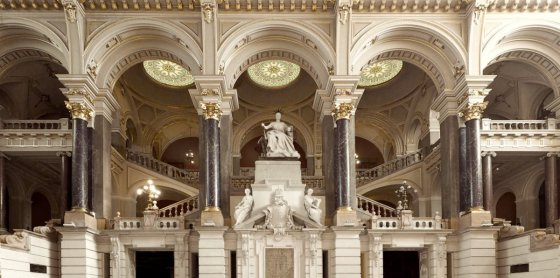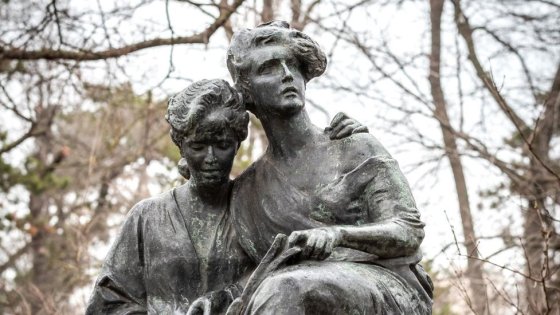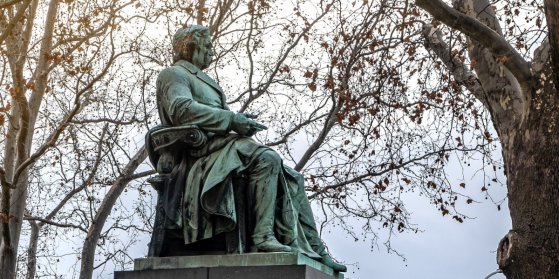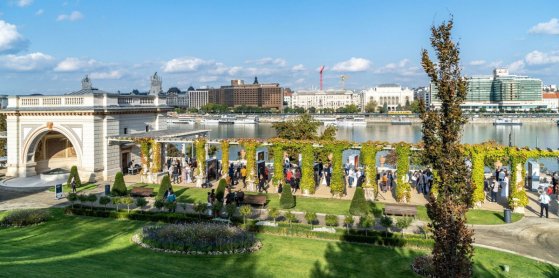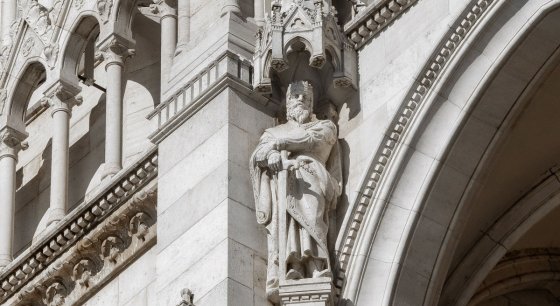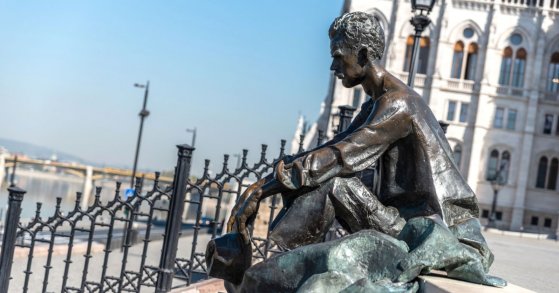 The „intertwined history” of the bridges and the city of Budapest
Which ideas and events have shaped the fate of bridges of Budapest and the cityscape? Alongside many other interesting facts, this question is also answered this newly published book by the Budapest City Archives, which introduces the history of bridges in Budapest.
The „intertwined history” of the bridges and the city of Budapest
Which ideas and events have shaped the fate of bridges of Budapest and the cityscape? Alongside many other interesting facts, this question is also answered this newly published book by the Budapest City Archives, which introduces the history of bridges in Budapest.
Alajos Strobl
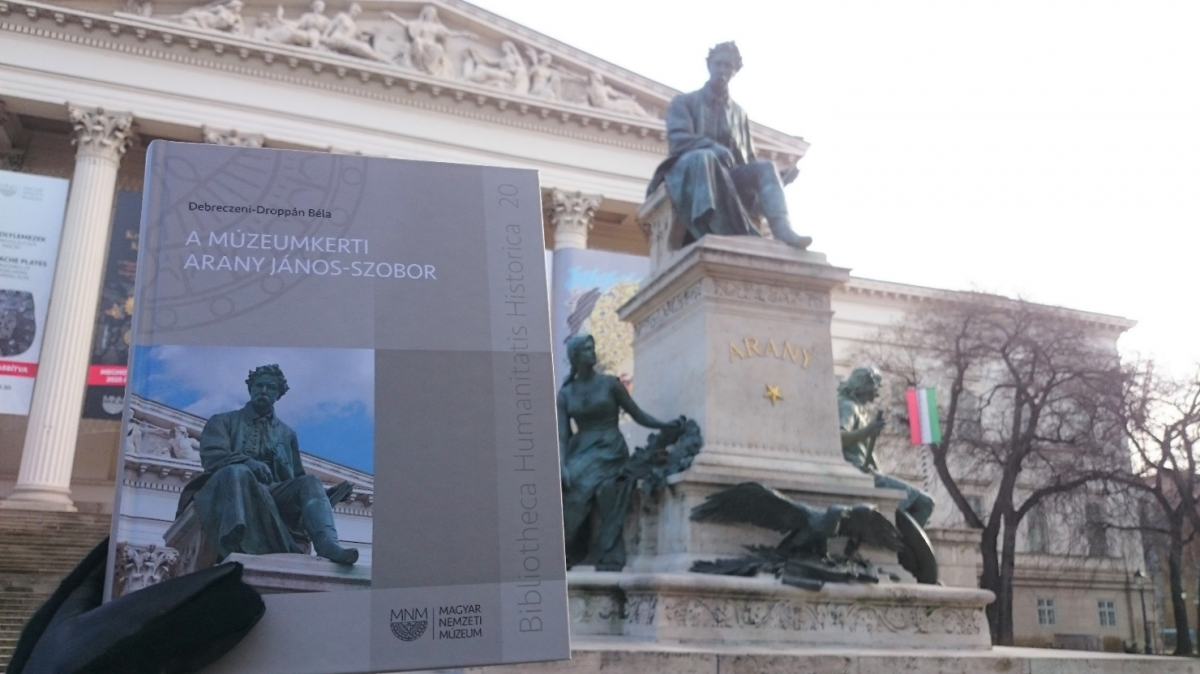 The meeting of a unique sculptor and the cult of Arany - Description of a period with the help of a 130-year-old famous monument in Pest
The meeting of a unique sculptor and the cult of Arany - Description of a period with the help of a 130-year-old famous monument in Pest
January 31, 2023 at 9:00 AM
130 years ago the first public statue of János Arany was inaugurated in front of the main entrance of the Hungarian National Museum. In a new book that has just been published, not only is the entire history of the monument and the adventurous life of its creator, Alajos Stróbl, revealed to the readers, but they can also see how the people of the 19th century thought and debated, what they considered beautiful and right, what they were different from or just similar to people now. The book, which is also rich in images, is both a colourful introduction and an exciting description of a period.
The renovated Jókai square has opened
August 1, 2022 at 6:30 PM
During the reconstruction, new street furniture was placed on Jókai Square in the 4th district, the green area was renewed, trees were planted, and a fountain was also placed.
A worthy plot of land for the Palace of Justice has been found opposite the Parliament - The building of the Curia is 125 years old
October 20, 2021 at 9:00 AM
Recently, the name of Alajos Hauszmann has been in the public consciousness, mainly as an architect of the Royal Palace, due to the constructions in the castle, but many other works are also connected to his name in Budapest. One of his most notable and most successful works is the building of the Curia in the Kossuth Square, which was handed over just 125 years ago, on 20 October 1896, in a ceremonial setting, as part of the millennium celebrations.
From whom Gellért Hill was named: the educator of prince Emeric died a martyr's death 975 years ago
September 24, 2021 at 9:03 AM
The name and legend of Saint Gellért is known not only to the Hungarians, but certainly to the tourists visiting here. If for no other reason, because the Gellért Hill statue of the first martyr of Christian Hungary is an integral part of the Budapest cityscape; the bishop has been holding the cross high above the capital for more than a hundred and ten years. The memory of Bishop Gellért, who died a martyr's death in 975 years, is preserved not only on the mountain, but also in many other works in the capital.
The first statue of Saint Stephen in Budapest was completed in 1906
May 25, 2021 at 10:00 AM
The statue of Saint Stephen has been standing in Buda Castle next to the Fisherman's Bastion for 115 years. Although the founding king of Hungary has always been highly respected in the country, the great work of Alajos Strobl was completed slowly. The first statue of King Stephen in Budapest was inaugurated in 1906 next to Matthias Church almost 40 years after it was first planned.
Statue of Justitia returning to Kossuth Square
April 16, 2021 at 2:30 PM
The 1896 marble statue of the Roman goddess of justice, Justitia, by Alajos Strobl, is returning to its original place after 71 years. The statue is being moved from the building of the Curia on Markó Street to the Palace of Justice opposite the parliament building. The building designed by Alajos Hauszmann on Kossuth Square, which previously housed the Museum of Ethnography, is being returned to the Curia. The palace is thus being renovated, and the facades and monumental interiors will regain their former beauty.
Jókai's loyal readers - Reading Girls, a statue by Alajos Strobl to return to Jókai Square
April 16, 2021 at 9:30 AM
Not only books, but sculptures also have their own destiny – this is what comes to mind when looking at the plans for the renovation of Jókai Square in Terézváros. In the shadow of Mór Jókai's sculpture erected in 1921, a smaller work appears, which may be familiar to many from among the trees of Városliget. The statue of the Reading Girls was originally intended by the creator Alajos Strobl as a side figure of the Jókai statue in Jókai Square but was never erected on the square. The Reading Girls statue was erected in 1929 but will now be moved from Városliget to its originally intended location.
The Wise Man of the Nation – Deák Ferenc died 145 years ago
January 31, 2021 at 5:00 PM
He played a prominent role in reaching the Austro-Hungarian Compromise of 1867, which created the dualist state known as the Austro-Hungarian Monarchy. The compromise led to stunning development in Hungary. Ferenc Deák, the "Wise Man of the Nation", died on 28 January 1876, 145 years ago. Many memorials throughout Budapest stand in honour of the great statesman.
Legends from Buda Castle: Descendants of Hauszmann and Strobl join opening of new photographic exhibition in the Castle Garden Bazaar
September 25, 2020 at 12:00 PM
The descendants of the Alajos Hauszmann, the Teleki family and Alajos Strobl can be seen in the portraits newly on display on the Southern Panorama Terrace of the Castle Garden Bazaar. The exhibition entitled legends from Buda Castle – open until 15 November – highlights the connections between the Castle and Budapest through the lives of people deeply connected to the Castle District.
Béla IV, died 750 years ago, founded Buda but does not even have a memorial plaque in the Castle District
July 6, 2020 at 8:00 AM
After the Tartar invasion, King Béla IV founded the city that is known today as Buda. He was looking for a place that would be impregnable during a next Mongol attack. He surrounded the plateau of Castle Hill with thick walls, parcelled and populated the area, and built monasteries and churches. Béla IV's Buda still exists today, the castle walls he built, the streets he walked on, the house walls and window frames he could see, the booths he could sit in, but not even a plaque preserves the name of the founder here.
Poetry Day Walk - Statues of the greatest Hungarian poets in Budapest
April 11, 2020 at 10:00 PM
On this year's National Poetry Day, 11 April - the birthday of Attila József - the public, community poem readings, which have already become a tradition, were cancelled, and we could not even visit the statues of the greatest Hungarian poets to show our respect and gratitude. Thus, Pestbuda offers only a virtual walk between the works depicting our national greats in Budapest.
More articles
 The „intertwined history” of the bridges and the city of Budapest
Which ideas and events have shaped the fate of bridges of Budapest and the cityscape? Alongside many other interesting facts, this question is also answered this newly published book by the Budapest City Archives, which introduces the history of bridges in Budapest.
The „intertwined history” of the bridges and the city of Budapest
Which ideas and events have shaped the fate of bridges of Budapest and the cityscape? Alongside many other interesting facts, this question is also answered this newly published book by the Budapest City Archives, which introduces the history of bridges in Budapest.
 The Bridge Report, which brought a turning point in the history of Budapest
A travel report that changed the history of Pest and Buda, as well as Hungary. The little book contributed to the change of half a thousand years of legal customs and the implementation of an investment of unprecedented size and technical quality. This book was The Bridge Report [Hídjelentés in Hungarian].
The Bridge Report, which brought a turning point in the history of Budapest
A travel report that changed the history of Pest and Buda, as well as Hungary. The little book contributed to the change of half a thousand years of legal customs and the implementation of an investment of unprecedented size and technical quality. This book was The Bridge Report [Hídjelentés in Hungarian].
 Drama on the university wall - The heroic monument was planned 95 years ago
In the constant hustle and bustle of the Egyetem Square in Pest, the students may not even notice the monument that decorates the short section of wall between the church and the central building of ELTE. However, it commemorates their predecessors, the heroes who fought for their country in World War I, and those who heroically helped them. The first design of the dramatically collapsing soldier was born in 1928, ninety-five years ago.
Drama on the university wall - The heroic monument was planned 95 years ago
In the constant hustle and bustle of the Egyetem Square in Pest, the students may not even notice the monument that decorates the short section of wall between the church and the central building of ELTE. However, it commemorates their predecessors, the heroes who fought for their country in World War I, and those who heroically helped them. The first design of the dramatically collapsing soldier was born in 1928, ninety-five years ago.

